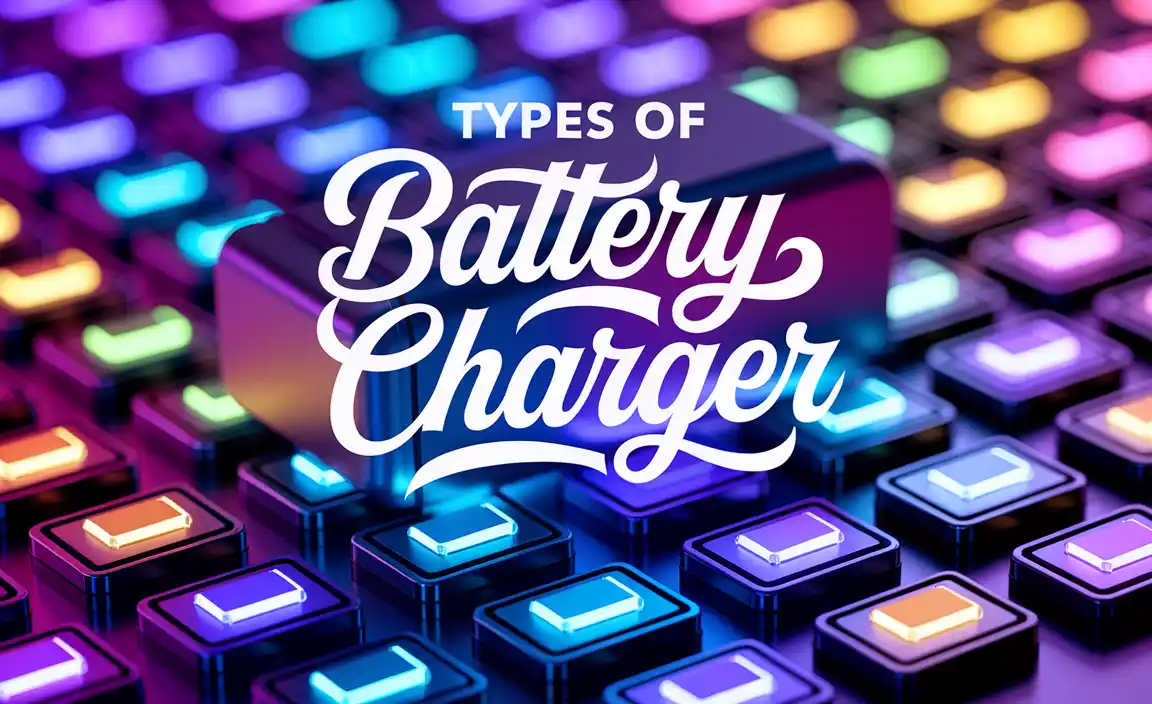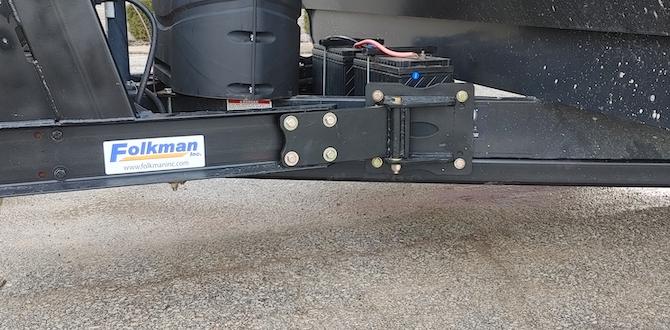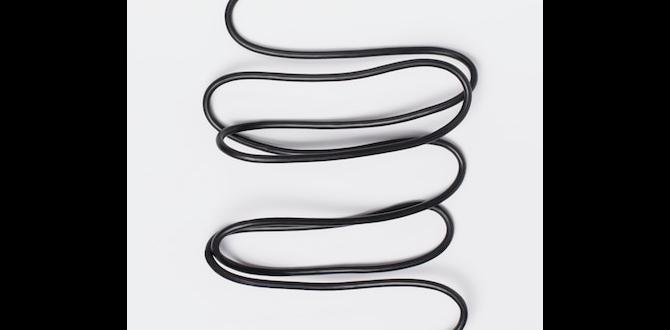Need a reliable car battery without breaking the bank? Find affordable deep cycle car batteries backed by a solid warranty to keep your adventures powered. This guide simplifies choosing the right one, ensuring you get lasting power and peace of mind.
Ever had your car battery give up on you, leaving you stranded? It’s a common headache, especially when you rely on your car for everything from daily commutes to weekend getaways. Finding a replacement that’s both budget-friendly and dependable can feel like a treasure hunt. But what if you could get a powerful deep cycle battery that lasts, comes with a good warranty, and doesn’t cost a fortune? That’s exactly what we’re diving into. We’ll break down what makes a deep cycle battery special, why a warranty matters, and how to snag a great deal. Get ready to power up your journey with confidence!
Understanding Deep Cycle Batteries: More Than Just Starting Power
When we talk about car batteries, most people think of the one that simply cranks the engine. That’s a “starting” battery. It’s designed for short bursts of high power to get your engine roaring. But a “deep cycle” battery is a different beast entirely, and it’s crucial for certain applications. Think of it like this: a starting battery is a sprinter, giving a quick, intense burst. A deep cycle battery is a marathon runner, providing steady, consistent power over a longer time.
These batteries are built to be repeatedly discharged to a significant degree and then recharged. This is perfect for powering accessories in your vehicle without draining the battery to a point of no return. Common uses include RVs, boats, golf carts, and even backup power systems. For a standard car, a deep cycle battery might be overkill unless you have specific needs, but understanding their strengths helps in making an informed choice for any battery purchase.
Why Choose Deep Cycle for Certain Vehicles?
- Consistent Power: They deliver steady voltage even when partially discharged, ideal for running electronics for extended periods.
- Longer Lifespan: Designed for deep discharges, they can handle more charge and discharge cycles than standard starting batteries.
- Versatility: Great for auxiliary power needs, like powering a fridge in an RV or electronics in a boat.
The “Cheap” Factor: Finding Value, Not Just Low Price
When you search for “cheap deep cycle car battery,” you want a good deal. But “cheap” shouldn’t mean “low quality” or “short-lived.” True value lies in finding a battery that offers the best performance and lifespan for its price. This often means looking at reputable brands known for their durability, even if they aren’t the absolute cheapest upfront.
Consider the total cost of ownership. A slightly more expensive battery that lasts twice as long and offers better performance can be much cheaper in the long run than constantly replacing a very cheap, unreliable one. We’re aiming for smart savings here – getting the most bang for your buck.
What “Cheap” Really Means in Battery Terms:
- Affordable Entry Price: It costs less to buy initially compared to premium options.
- Good Value Proposition: You’re getting decent performance and longevity for the money spent.
- Smart Investment: It prevents frequent replacements and costly breakdowns.
The Importance of a Warranty: Your Power Insurance
This is where the “with warranty” part becomes incredibly important, especially when looking for affordable options. A warranty is your safety net. It tells you that the manufacturer stands behind their product. For a deep cycle battery, which is an investment, having a warranty provides peace of mind that if something goes wrong, you’re covered.
Warranties can vary significantly. Some might cover a few months, while others go up to several years. Understanding the terms is key. Is it a “free replacement” warranty or a “prorated” one? A free replacement means if the battery fails within the stated period, you get a brand-new one. A prorated warranty means you’ll get a partial credit towards a new battery based on how long you’ve owned the old one.
Key Things to Look for in a Battery Warranty:
- Duration: How long is it valid? (e.g., 1 year, 2 years, 3 years)
- Coverage: What exactly does it cover? Defects in materials and workmanship are standard.
- Claim Process: How easy is it to file a claim if needed?
- Type of Warranty: Free replacement vs. prorated.
For a deep cycle battery, a minimum of a 1-year free replacement warranty is a good starting point for affordable options.
Deep Cycle vs. Standard Car Batteries: What’s the Difference?
Let’s clarify this because it’s a common point of confusion. A typical car battery is designed to deliver a massive surge of power for a few seconds to start your engine. Once the engine is running, the alternator takes over to power the car and recharge the battery. These batteries are not built to be discharged deeply and then recharged repeatedly. Doing so can significantly shorten their lifespan.
Deep cycle batteries, on the other hand, are engineered for a slower, more sustained power output. They have thicker plates and a different internal construction that allows them to handle being discharged more fully without degradation. This makes them ideal for applications like trolling motors on boats, powering camping equipment, or running auxiliary systems in RVs.
While you can use a deep cycle battery to start a car, it’s often not the most cost-effective or efficient solution for a standard vehicle. Starting batteries are optimized for that specific, high-amperage burst. However, if your car or truck has significant aftermarket electrical accessories (like powerful sound systems, winches, or extensive lighting), a deep cycle or a hybrid “dual-purpose” battery might be a better fit.
Types of Deep Cycle Batteries to Consider
When you’re shopping for a deep cycle battery, you’ll encounter a few main types. They all serve the purpose of sustained power, but they differ in technology, cost, and maintenance needs.
1. Flooded Lead-Acid (FLA) Batteries
These are the most traditional and usually the cheapest type of deep cycle battery. They require maintenance because the electrolyte fluid needs to be topped up with distilled water periodically. They are also sensitive to the way they are mounted, as they can spill.
- Pros: Most affordable upfront, widely available.
- Cons: Require regular maintenance (adding water), can be heavy, need to be kept upright to avoid spills, emit gasses that need ventilation.
2. AGM (Absorbent Glass Mat) Batteries
AGM batteries are a sealed, maintenance-free option. The electrolyte is absorbed into fiberglass mats sandwiched between the plates. This makes them much more vibration-resistant and spill-proof than flooded batteries. They also handle deep discharges well and can recharge faster.
- Pros: Maintenance-free, spill-proof, vibration-resistant, faster charging, can be mounted in various positions.
- Cons: More expensive than flooded lead-acid batteries.
3. Gel Cell Batteries
Similar to AGM in being sealed and maintenance-free, gel cell batteries use a silica-based gel as the electrolyte. They are excellent for deep discharge applications and are very durable. However, they can be sensitive to overcharging and recharge more slowly than AGMs.
- Pros: Maintenance-free, spill-proof, deep discharge capability, good lifespan.
- Cons: Generally the most expensive option, slower to charge, sensitive to overcharging, can be damaged by high charging rates.
For most people looking for a “cheap deep cycle car battery with warranty,” a flooded lead-acid battery will offer the lowest entry price, while an AGM battery often strikes a good balance between cost, performance, and the convenience of being maintenance-free. For a car application, especially if it’s a secondary battery or for significant power draws, AGM is often the preferred choice due to its durability and resistance to vibration.
Where to Find Cheap Deep Cycle Car Batteries with Warranty
Finding these batteries involves looking in a few key places. It’s about being a smart shopper and knowing where to look for deals and reliable options.
Online Retailers
Websites like Amazon, Walmart online, and dedicated battery suppliers often have a wide selection. You can easily compare prices, read reviews, and check warranty information. Deals can pop up frequently, especially during major sales events.
- Pros: Huge selection, competitive pricing, customer reviews, easy comparison.
- Cons: Cannot inspect the battery before purchase, shipping can be expensive for heavy items.
When buying online, always verify the warranty details directly from the seller or manufacturer’s website. Some third-party sellers might not offer the full manufacturer warranty.
Auto Parts Stores
Major auto parts chains (like AutoZone, Advance Auto Parts, O’Reilly Auto Parts, NAPA) are excellent places to find car batteries. They often have sales, and their staff can offer advice. You can also check the battery in person and take it home the same day.
- Pros: Can see and touch the battery, knowledgeable staff, immediate pickup, easier returns and warranty claims.
- Cons: Selection might be more limited than online, prices can sometimes be higher.
Many of these stores offer their own house-brand batteries, which are often manufactured by major brands and come with competitive warranties at a lower price point.
Specialty Battery Stores
These stores focus specifically on batteries and power solutions. They might have a broader range of deep cycle options and more specialized knowledge. While not always the “cheapest,” they can offer excellent value and expert advice for your specific needs.
- Pros: Expert advice, specialized products, potentially better quality control.
- Cons: Can be more expensive, fewer locations.
Warehouse Clubs
Places like Costco or Sam’s Club sometimes carry automotive batteries, including deep cycle options. They are known for offering good value and solid warranties on their house brands.
- Pros: Often excellent pricing and warranties, good for bulk purchases.
- Cons: Limited selection, membership required.
Essential Features to Look for in a Cheap Deep Cycle Battery
Beyond just the price, there are a few critical features that will ensure you’re getting a quality battery that meets your needs and has a decent warranty.
1. Cold Cranking Amps (CCA) and Cranking Amps (CA)
While deep cycle batteries aren’t primarily for starting, they still need enough CCA to reliably start your vehicle, especially in colder climates. If you’re using a deep cycle or dual-purpose battery to replace your main starting battery, check your car’s manual for the recommended CCA rating. For auxiliary deep cycle batteries, these ratings are less critical.
2. Reserve Capacity (RC)
This is a crucial metric for deep cycle batteries. It measures how long a battery can deliver a specific amount of current (usually 25 amps) at 80°F (27°C) before its voltage drops to a still-usable level (10.5 volts). A higher RC means the battery can power your accessories for longer.
3. Ampere-Hour (Ah) Rating
This indicates the battery’s total energy storage capacity. A higher Ah rating means the battery can store more energy and provide power for a longer duration at a given draw. For deep cycle applications, this is often more important than CCA.
4. Warranty Period and Type
As discussed, always prioritize a good warranty. For a “cheap” battery, look for at least a 1-year free replacement warranty. Check the terms carefully to understand what is covered and the process for making a claim.
5. Brand Reputation and Reviews
Even with a tight budget, stick to brands that have a generally good reputation. Look for online reviews, but be discerning. Focus on reviews that discuss longevity, performance under load, and customer service related to warranty claims.
6. Battery Type (AGM vs. Flooded)
For most modern vehicles and for users who want minimal fuss, an AGM deep cycle battery is often the best compromise. If budget is the absolute primary concern and you don’t mind maintenance, a flooded lead-acid might suffice. Always ensure the battery is designed for deep cycling use.
DIY: How to Replace Your Car Battery Safely
Replacing a car battery is a common DIY task that can save you money. Safety is paramount, as batteries contain corrosive acid and can produce explosive gases. Always follow these steps carefully.
Tools and Materials You’ll Need:
- New Deep Cycle or Dual-Purpose Battery (with adequate CCA for starting if it’s your main battery)
- Wrench Set or Socket Set (typically 10mm and 13mm for terminals and hold-down)
- Wire Brush or Battery Terminal Cleaner
- Protective Gloves
- Safety Glasses
- Rag or Paper Towels
- Optional: Terminal Protector Spray/Grease
Step-by-Step Guide:
- Park Safely: Park your car on a level surface, turn off the engine, and engage the parking brake. Open the hood.
- Locate the Battery: Batteries are usually found under the hood, but some vehicles have them in the trunk or under a seat. Consult your car’s manual if unsure.
- Disconnect the Negative Terminal FIRST: Using the appropriate wrench, loosen and remove the cable clamp from the negative (-) terminal. This terminal is usually black or marked with a minus sign. Tuck the cable aside so it doesn’t accidentally touch the battery post. Disconnecting the negative first prevents a short circuit if your wrench touches the car’s metal body while on the positive terminal.
- Disconnect the Positive Terminal SECOND: Now, loosen and remove the cable clamp from the positive (+) terminal. This terminal is usually red or marked with a plus sign. Tuck this cable aside as well.
- Remove the Battery Hold-Down: Most batteries are secured by a bracket or strap at the base or top. Remove the bolts or nuts holding this in place.
- Lift Out the Old Battery: Batteries are heavy! Lift carefully, using your legs, not your back. If it’s too heavy, ask for help. Batteries contain lead and acid, so handle with care.
- Clean the Tray and Cables: Use the wire brush or terminal cleaner to thoroughly clean the battery tray, the cable clamps, and the battery posts of any corrosion (a white or bluish powdery substance). Clean, shiny connections ensure good electrical flow.
- Install the New Battery: Carefully place the new battery into the tray, ensuring it’s oriented correctly (positive and negative terminals aligned with the cables).
- Secure the Battery: Reinstall and tighten the battery hold-down bracket. The battery should be firmly in place and not move.
- Connect the Positive Terminal FIRST: Place the positive cable clamp onto the positive (+) terminal post and tighten it securely.
- Connect the Negative Terminal SECOND: Place the negative cable clamp onto the negative (-) terminal post and tighten it securely.
- Apply Terminal Protector (Optional): You can spray a battery terminal protector or apply a thin layer of grease to the terminals to help prevent future corrosion.
- Test: Close the hood, start the car, and check if all systems are working normally.
Safety Note: Always wear gloves and safety glasses when working with car batteries. If you are not comfortable with any step, it’s best to have a professional mechanic do the job. Responsible disposal of old batteries is also crucial; most auto parts stores will accept them for recycling.
Pros and Cons of Choosing a Cheap Deep Cycle Battery with Warranty
Deciding on a budget-friendly deep cycle battery with a warranty involves weighing the good against the not-so-good. Here’s a breakdown:
Pros:
- Cost Savings: The most obvious benefit is saving money upfront compared to premium brands or higher-spec batteries.
- Accessible Power: Makes essential auxiliary power available to more people without a huge financial barrier.
- Warranty Protection: The warranty offers a critical layer of security against premature failure.
- Good for Light Use: If your power needs aren’t extreme or constant, a cheaper battery can still perform adequately.
- DIY Friendly: Easy to find and replace, especially if you’re doing it yourself.
Cons:
- Potentially Shorter Lifespan: Cheaper batteries may not last as long as premium ones under heavy use.
- Lower Performance: May not offer the same capacity (Ah) or sustained power output as more expensive options.
- Quality Variations: “Cheap” can sometimes mean less stringent quality control, leading to higher failure rates.
- Warranty Hassles: While a warranty exists, the claim process might be more difficult or slower with some budget brands.
- Not for Heavy Demands: If you’re running high-draw electronics constantly, a budget battery might struggle.
Maintaining Your Deep Cycle Battery for Longevity
Even a cheap deep cycle battery with a warranty can last longer and perform better if you take good care of it. Regular maintenance can prevent common issues and help you avoid needing that warranty too soon.



